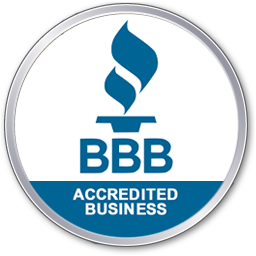Asbestos is a naturally occurring mineral composed of long, thin fibers. The fibers are fire-resistant and insulate well, which made asbestos popular as a construction material in the 18th and 19th centuries.
However, asbestos dust can be hazardous when inhaled, as the small fibers are permanently trapped in the body. Over time, the fibers can inflame, scar, or otherwise damage tissue. Asbestos has been linked to:
- Lung, colon and other cancers
- Asbestosis
- Mesothelioma
Asbestos removal can be tricky, as disturbing the asbestos turns it airborne.
At Alpha Environmental, our certified professionals are trained to safely remove asbestos from residential and commercial buildings.
Asbestos removal process
The Oregon Department of Environmental Quality (DEQ) has established strict asbestos regulations around removal. We take extra care to follow the asbestos abatement process below.
1. Asbestos sampling
Asbestos abatement begins with taking samples of the suspected material to make sure it’s asbestos.
To test for asbestos, our specialists will take 2 kinds of samples:
- Material samples: We take small pieces of suspected materials and analyze them and test how much of the material is made of asbestos.
- Dust samples: We scrape, wipe, tape-lift or micro-vacuum dust from a suspected asbestos-containing material.
2. Asbestos testing
Once we have the samples, our specialists will analyze them to identify asbestos particles. We’ll also test how much of the material is made of asbestos.
You should hire a professional to test for asbestos if:
- You’re doing a DIY remodeling project
- Your home or building was built before 1980
- You notice crumbling or broken asbestos-containing materials
Learn more about our asbestos testing process.
3. Asbestos abatement
To remove the asbestos, our specialists will:
- Set up and demarcate the impacted area. We mark off the hazardous area, turn off your HVAC system, and seal off any air ducts and areas that don’t require asbestos abatement.
- Remove the asbestos. To prevent the asbestos from being disturbed as much as possible, our specialists use hand tools and wet methods. They also make sure to wear masks and protective clothing.
- Dispose of the asbestos materials. We place the asbestos materials in disposal bags that are sealed and removed in a specially lined decontamination unit, if Oregon DEQ asbestos regulations require it.
- Clean up asbestos particulates. Our specialists remove any remaining asbestos particles using vacuums with a HEPA (high efficiency particulate air) filter. If required by the DEQ, a third party will then sample the air to make sure airborne asbestos is within the legal limit.
Learn more about our asbestos abatement process.
Following DEQ 340-248-0270 asbestos regulations
According to Oregon Administrative Rule (OAR) 340-248-0270, any demolitions or renovations require an inspector to perform an asbestos survey. Copies of the survey must then be sent to DEQ and be kept onsite during the demolition or renovation.
The asbestos survey must include:
- Samples of all suspected asbestos-containing materials
- At least 3 samples for sprayed or troweled on surfacing materials
- Analysis of the suspected materials in a laboratory accredited for asbestos testing
- An asbestos survey report that contains the following:
- Survey date
- Inspector phone number and accreditation certificate
- Survey site address and location
- Name and phone number of home/building owner and, if different, of whoever is managing the demolition or renovation
- Survey area description, including past and current use, area square footage, approximate construction date, and number of floors
- Survey purpose (e.g. pre-demolition, renovation, removal of asbestos-containing material due to damage from fire, water, or other purpose, etc.)
- Limitations on the thoroughness of the survey (any inaccessible areas, for example)
- A table listing all confirmed and suspected asbestos-containing materials. The table must include the following for each material:
- The percentage and type of asbestos, as determined by the laboratory
- A description of the material color, texture, and pattern
- Where in the facility the material was collected
- A description of the material condition (e.g. good condition or poor condition)
- Whether the material crumbles easily (i.e. is friable)
- Approximate material quantity at the facility
- Recommended response actions that comply with DEQ requirements
- A complete copy of the laboratory report for all samples taken, which must include:
- Laboratory name, address, and phone number
- Unique sample analysis identification number
- Bulk sample analysis results showing asbestos content
- Analyst name
- Completed chain of custody for the samples
To renovate or demolish anything without a survey, you must get approval from the Oregon DEQ.
If asbestos-containing materials are found on the property, you must:
- Stop all work immediately
- Keep the exposed asbestos-containing materials wet and covered plastic until a licensed asbestos abatement contractor can remove it
- Have the contractor remove, handle and dispose of all friable asbestos-containing material
To remove non-friable asbestos-containing materials, you must:
- Submit asbestos removal notification and the appropriate fee to the DEQ.
- Remove materials in a way that doesn’t damage them (i.e. keeps them non-friable). If the asbestos-containing material is damaged, you must follow the normal asbestos regulations.
For demolition by intentional burning, all asbestos-containing materials must be removed and disposed of properly.
Anyone performing asbestos abatement must:
- Remove asbestos inside a regulated area
-
- Remove all asbestos-containing materials before another demolition or renovation begins that would break up, dislodge, or disturb the materials. Asbestos-containing materials don’t need to be removed if:
- Encased in concrete or other similar material and are kept wet when exposed during demolition or renovation
- Discovered after demolition or renovation and can’t be removed because of unsafe conditions
- Keep asbestos-containing materials wet when removing them. Wetting isn’t required when it would damage equipment, violate specialized work practices, or present a safety hazard, as long as the person performing the asbestos abatement:
- Gets approval from DEQ for dry removal of asbestos-containing material
- Keeps a copy of DEQ approval available at the work site
- Wraps or encloses asbestos-containing material during handling to avoid releasing fibers
- Uses an exhaust ventilation and collection system to capture asbestos particles
- Remove all asbestos-containing materials before another demolition or renovation begins that would break up, dislodge, or disturb the materials. Asbestos-containing materials don’t need to be removed if:
- Follow these guidelines when materials covered with asbestos-containing materials are being removed as units or in sections:
-
-
- Wet asbestos-containing materials exposed during cutting or disjointing
- Carefully lower the units or sections to ground level, not dropping or throwing them
- May leave asbestos-containing materials in large pieces (such as reactor vessels, large tanks and steam generators, but excluding beams) if the component is:
- Removed, transported, stored, disposed of, or reused without disturbing or damaging the asbestos-containing material
- Encased in leak-tight wrapping that’s labeled and complies with regulations during loading, unloading and storage
-
- Remove friable (damaged or crumbling) asbestos-containing materials as follows:
-
- Keep materials wet until disposed of
- Carefully lower the materials to the floor, not dropping or throwing them
- With DEQ’s prior written approval, transport the materials to the ground via dust-tight chutes or containers if they have been removed or stripped above ground level and were not removed as units or in sections
- Enclose the asbestos removal area with a negative pressure enclosure prior to and during abatement, unless DEQ grants written approval for an alternative
- Install at least one viewing window in all enclosures, including negative pressure enclosures, as follows:
- The window must be at least two feet by two feet and made of a material that allows a clear view inside the enclosure
- For large enclosures, including negative pressure enclosures, install one viewing window for every 5,000 square feet of area when spatially feasible
- A negative pressure enclosure isn’t required for removing friable asbestos-containing material when:
- Removing asbestos-containing petroleum-based roofing products or cement asbestos roofing
- The total amount of asbestos-containing material can be contained in a single glove bag
- Comply with the following when demolishing a facility because it’s structurally unsound and in danger of imminent collapse:
- Obtain DEQ’s written approval for an ordered demolition procedure before that demolition takes place
- Send a copy of the order and an asbestos abatement project notification to DEQ before starting demolition work
- Keep a copy of the order, DEQ’s approval, and the notification form at the demolition site during the entire demolition until final (and proper) disposal of the project waste
- Keep asbestos-containing materials wet during demolition and comply with the disposal requirements
- Not use mechanical equipment to remove asbestos-containing material outside of a full negative pressure enclosure without prior written approval from DEQ
- Ensure no visible emissions during asbestos abatement, except within a negative air pressure enclosure
- Use an exhaust ventilation and collection system, negative air machine, or vacuuming equipment equipped with a HEPA filter or similarly efficient filter, which must be sealed with plastic when not in use
- Get DEQ approval for any alternatives to asbestos requirements. They must submit a written description of the proposed alternatives and demonstrate that they provide public health protection equivalent to the protection that would be provided by the specific requirements, or that such level of protection can’t be obtained for the asbestos abatement project.
- Have at least one air sample collected before the negative pressure enclosure around the area is removed. Final Air Clearance Sampling Requirements apply to projects involving more than 160 square feet or 260 linear feet of asbestos-containing material. The air inside the negative pressure enclosure must have no more than 0.01 asbestos fibers per cubic centimeter of air. If they receive an advance request, the DEQ may grant a waiver to this section or exceptions to the following:
- The air clearance samples must be collected and analyzed by a party that’s National Institute of Occupational Safety and Health (NIOSH) 582 certified and not be paid by the person performing the asbestos abatement project, other than for the asbestos sampling and analysis.
- The following must be completed before final air clearance sampling is performed:
- All visible asbestos-containing material must be properly removed, packaged and stored
- The air and surfaces within the negative pressure enclosure must be sprayed with an encapsulant prior to air clearance sampling
- Air sampling may start when the encapsulant has settled sufficiently so that the filter of the sample is not clogged by airborne encapsulant
- Air filtration units must remain on during the air-monitoring period
- Air clearance sampling inside negative pressure enclosure areas must be aggressive and comply with the following:
- Immediately before starting the sampling pumps, direct exhaust from a minimum one horsepower forced air blower against all walls, ceilings, floors, ledges, and other surfaces in the negative pressure enclosure
- Place stationary fans where they won’t interfere with air monitoring equipment and direct the fans toward the ceiling. Use one fan per 10,000 cubic feet of room space.
- Start sampling pumps and sample an adequate volume of air to detect concentrations of 0.01 fibers of asbestos per cubic centimeter according to NIOSH 7400 method
- When sampling is completed, turn off the pump and then the fan(s)
- As an alternative, the air clearance sample analysis may be performed according to Transmission Electron Microscopy Analytical Methods prescribed by 40 C.F.R. 763, Appendix A to Subpart E (Interim Transmission Electron Microscopy Analytical Methods)
- The person performing an asbestos abatement project submits the final air clearance sample results to DEQ on a DEQ form within 30 days of the project completion date and includes all third-party air clearance analysis reports.
For the full asbestos regulations, visit the Oregon DEQ asbestos requirements page.
Call Us for Asbestos Sampling in Portland, OR
At Alpha Environmental, our specialists strictly follow the Oregon DEQ asbestos regulations to ensure asbestos-containing materials are safely removed from your house or building. With help from our advanced equipment and meticulous testing methods, we’ll locate and remove the asbestos the first time around.
Call us today at (503) 292-5346 or contact us online to schedule a free estimate for asbestos sampling or asbestos abatement.




